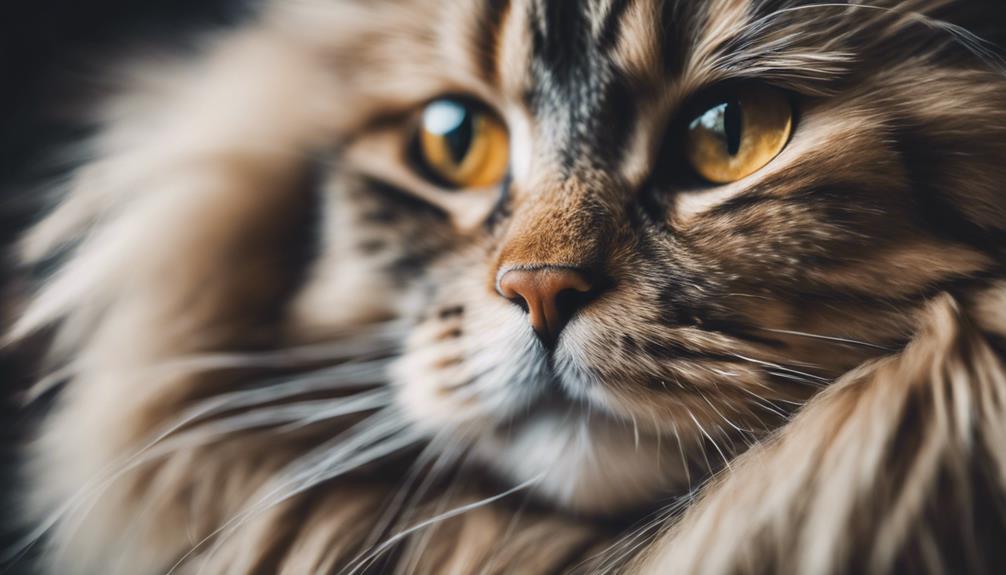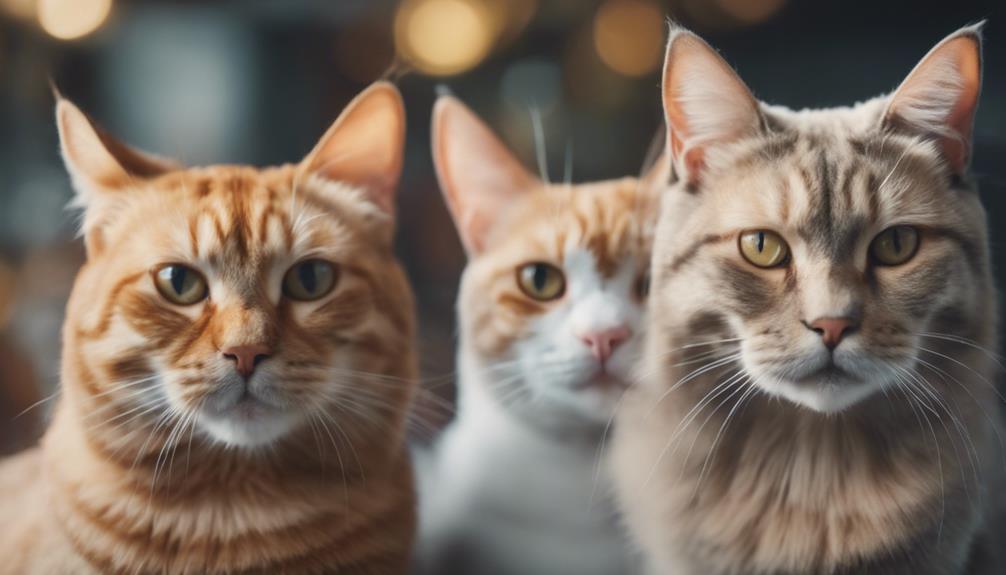Within the enigmatic realm of feline genetics lies a quest that intrigues many cat owners – the definitive identification of their cat's breed. While traditional methods like observing physical traits and behaviors offer valuable clues, the intricate tapestry of a cat's lineage often demands a more sophisticated approach.
By exploring the emerging field of feline DNA testing, a new avenue opens up for uncovering the secrets hidden within your cat's ancestry. As technology evolves, the possibilities for cat breed determination continue to expand, promising a deeper understanding of your feline companion that may surprise even the most seasoned cat enthusiasts.
Key Takeaways
- Coat color, pattern, and length are crucial for identifying cat breeds accurately.
- Behavioral patterns like vocal demands in Siamese or friendliness in Maine Coons help in breed recognition.
- Understanding body types, head shapes, and behavior aids in determining your cat's breed heritage.
- Coat characteristics, body types, and head shapes offer valuable insights into your feline companion's genetic background.
Physical Traits for Cat Breed Identification
When identifying a cat's breed based on physical traits, attention to details such as coat color, size, body type, and head shape can offer valuable hints about its genetic makeup. Coat color, pattern, and length are key indicators, along with body size and type.
Certain breeds have distinct characteristics, like the Siamese with its pointed coat pattern or the Persian with its long, luxurious fur. Paying attention to head shape can also provide clues; for instance, breeds like the Maine Coon have broader heads compared to others.
While some colors are common across breeds, specific patterns like tabby or calico are more prevalent in certain breeds. Understanding these physical traits can help in determining a cat's likely breed heritage.
Behavioral Patterns in Cat Breeds
Exploring the temperament and behavioral characteristics associated with different cat breeds offers valuable insights into understanding their distinct patterns of behavior. Some breeds are known for being more social and affectionate, while others may be more independent or reserved.
For example, Siamese cats are often vocal and demanding of attention, while Maine Coons are typically friendly and gentle giants. Persian cats are known for their calm and laid-back demeanor, while Bengal cats are energetic and playful.
Understanding these behavioral patterns can help cat owners better meet the needs of their feline companions and create a harmonious relationship based on mutual understanding and respect.
Importance of Coat Characteristics

Understanding the significance of coat characteristics plays a crucial role in identifying and appreciating the diverse traits exhibited by different cat breeds. The coat's color, pattern, and length are key factors in distinguishing between breeds.
For instance, the Siamese breed is known for its distinctive color points, while the Maine Coon is recognized for its long, thick fur. Certain patterns like tabby or calico are more commonly associated with specific breeds.
Coat characteristics can also provide insights into a cat's genetic background and potential health issues. By paying attention to these features, cat owners and enthusiasts can better understand and care for their feline companions, appreciating the unique qualities that make each breed special.
Understanding Cat Body Types
The physical build of a cat, often referred to as its body type, plays a significant role in distinguishing different breeds and understanding their unique characteristics. Cat body types can vary widely, ranging from slender and athletic to stocky and muscular.
Some breeds, like the Siamese, are known for their sleek and slender bodies, while others, such as the Maine Coon, boast large and robust frames. Paying attention to a cat's body size, shape, and muscle tone can offer clues about its breed.
Understanding these body types can help in identifying potential breeds and appreciating the diverse physical attributes that different cat breeds exhibit.
Head Shape Clues for Cat Breeds

Feline breed identification can be informed by observing distinctive head shapes in cats. Different cat breeds exhibit unique head shapes that can serve as clues to their ancestry.
For example, Siamese cats are known for their wedge-shaped heads, while Persians have round, flat faces. Maine Coons typically have large, square heads with tufted ears, and Scottish Folds are recognized by their folded ears atop rounded heads. Additionally, breeds like the Oriental Shorthair are identified by their elongated, sleek heads.
DNA Testing for Cat Breed Verification
Utilizing DNA testing is a highly accurate method for verifying the breed of a cat. DNA tests offer precise breed information by analyzing genetic markers. Kits typically involve obtaining a cheek swab sample to unravel a cat's genetic makeup.
Companies like Basepaws and Optimal Selection provide these services, with costs ranging from $100 to $500. These tests can offer insights into a cat's breed composition, helping to identify any specific breeds present in a mixed-breed cat.
Additionally, in-office blood tests are also available as an alternative for determining a cat's DNA. Overall, DNA testing is a reliable and scientific approach to confirm a cat's breed, offering a definitive answer to the age-old question of what breed your cat is.
Conclusion
In conclusion, unraveling the mystery of your cat's breed involves a combination of analyzing physical traits, behavioral patterns, coat characteristics, body types, and even DNA testing. By understanding these key factors, you can uncover the lineage of your feline companion with precision.
So, next time you gaze into your cat's eyes, pondering their origins, remember the diverse elements that contribute to their unique identity. Can you crack the code of your cat's breed?




